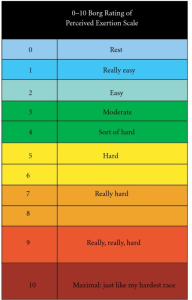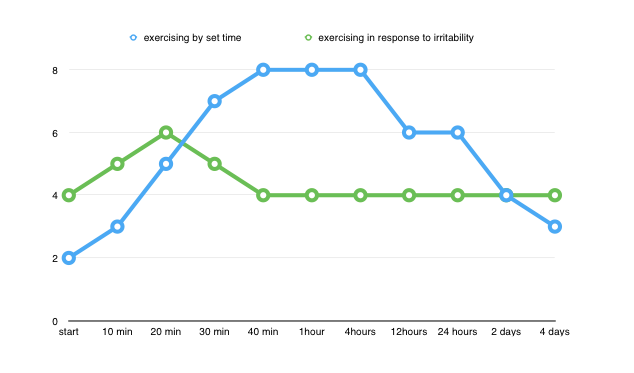YOUR PHYSIO
Long term conditions
Exercise for persisting pain

Persisting pain can be defined as pain that has been present for more than 3 months. When pain has been present for this long it is often associated with a reduction in activity levels, which in turn can lead to decreased fitness and muscle weakness. This in turn can lead to symptoms such as fatigue, tender joints and muscles away from the original site of pain. People with persisting pain often experience mental health symptoms, if this is the case you should read our useful guide here.
Because of the negative cycle described above persisting pain tends to make normal day to day activities harder to perform and you may experience more pain with even simple day to day tasks.
Regular exercise is the antidote to this negative cycle. In persisting pain regular exercise has been shown to:
- Decreased pain (usually an improvement of 2-3 points on a 0-10 scale of pain)
- Enhance performance of work and recreational activities (strong improvement)
- Decreased fatigue
- Decreased number of tender points (joint and muscle pain)
- Improve physical fitness
There are also a number of other beneficial side effects:
- Decrease in blood pressure
- Decreased resting heart rate
- Decreased risk for heart disease or stroke
- Improved sleep
- Decreased anxiety and depression
- Increased efficiency of the heart
- Increased control of blood sugar levels
- Increased ability to burn fat
- Increased energy
- Improved cholesterol profile
- Enhanced feeling of well-being
What type of exercise helps?
- The best place to start is with low intensity cardiovascular exercise. Low intensity means that you are exercising but easily able to hold a conversation. As your fitness improves you may want to progress to moderate intensity cardiovascular exercise. Moderate means it is still possible to hold a conversation between breaths while exercising. You may find the scale below useful for rating your exercise. When you start you want to be around the 2-3, but as your fitness improves you will eventually be able to exercise in th 4/5/6 range. Exercising in the green and yellow zones are associated with lasting improvements to your fitness.

- Examples of cardiovascular exercise are walking, jogging, cycling and swimming. Many racket sports, team sports, and martial arts have a significant cardiovascular component to them. In the long term joining a team or club can help you stick with exercise and stay healthy.
- Initially your body might not cope with alot of one exercise so its a good idea to be flexible and try a few different type of exercise. In a gym this may mean trying a few different machines in the same workout, in the pool this may mean varying your strokes.
- It is a good idea before starting exercise that you make sure you are fit and well otherwise. If you have pre-existing medical problems you should chat through your intention to take up exercise with your GP first.
Getting going-what to expect
The most important thing to realise before getting going is that regardless of having persisting pain or not it is normal to get some low grade stiffness and muscle aches after exercise. This phenomenon is known as delayed onset muscle soreness (DOMS) and usually occurs 24-48 hours after exercising. The fitter you get the less noticeable this will become.
It is important to note that exercise does have the potential to flair up persisting pain symptoms which if not managed properly can hinder progress and make it less likely that you will want to continue exercising. The good news is flair ups can usually be kept to a minimum by understanding and managing your symptoms irritability.
Understanding and managing irritability

Irritability is a term that is used to describe how easy it is to provoke pain and then how quickly symptoms settle again. Irritability is different for everyone . Symptoms with low irritability usually take quite a while to increase and then settle reasonably quickly. Highly irritable symptoms stir up quickly and then take a long time to settle.
When starting to exercise with persisting pain being aware of how your symptoms behave and whether they have a low or high irritability is important as this knowledge will allow you to plan how much exercise you want to do and how quickly you will want to increase things.
The diagram above shows the difference between starting exercise with and without an appreciation of irritability. The vertical scale represents pain and the horizontal scale represents time.
The blue line represents a patient who has set themselves a time goal without considering irritability. They complete a planned work out of 40 minutes, their pain becoming more intense over time. As you can see as a result of pushing through pain to reach the time goal the pain symptoms are exacerbated and take a number of days to settle. The green line represents a patient who has set themselves an exercise goal based on irritability. They have decided that they will only allow their pain to increase by two points on the 0-10 during exercise before they stop. As you can see they reach this goal within 20 minutes, they then stop and their symptoms quickly return to normal.
We would normally recommend setting your exercise goals around irritability and not allowing your pain to move more than 2 points on a 0-10 scale above your pain at the start of activity. Depending on how irritable things are this may mean your initial exercise sessions are quite short.
Getting going what to expect
You should be aiming to exercise initially for between 5 and 15 minutes per session 3 times per week, based upon your symptom irritability. As your tolerence improves you should be able to increase the time and the intensity of training. We would expect you to see benefits within 3 months.
Troubleshooting
The most common issue encountered is flair of pain following an increase in exercise volume or intensity. In this situation it is best to reduce your exercise back down to the pre incremental level and try again once flair has settled. It is a good idea to then increase your activity by half the amount of the increment that caused the flair.
Further help
You can arrange a consultation with us by clicking here. (link to self ref page
Alternatively City of York Council run a program designed to support participation in exercise. The scheme can be accessed by GP referral. To find out more click here.